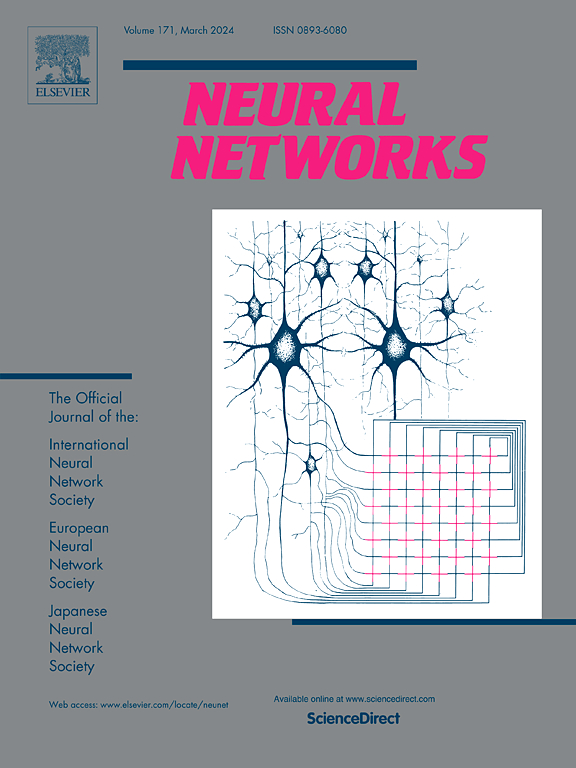跨域序列推荐的显性偏好解耦和定向扰动偏好注入
IF 6.3
1区 计算机科学
Q1 COMPUTER SCIENCE, ARTIFICIAL INTELLIGENCE
引用次数: 0
摘要
跨域序列推荐联合建模跨域和域内交互序列,提取相关信息,预测未来跨域交互。然而,目前的主流方法忽略了域内主导偏好和扰动偏好对预测结果的影响。为此,本文提出了优势偏好解耦和引导扰动偏好注入跨域序列推荐(DP-CSR)模型来解决上述问题。其核心思想是在保留域内主导偏好的同时,从跨域序列中提取受干扰的偏好信息,以预测用户交互。具体而言,DP-CSR通过多通道超图学习捕获不同的域内主导偏好,然后使用注意机制将它们整合起来。然后,利用序列编码器对域内序列和跨域序列联合建模,构建序列化的扰动偏好。此外,门控机制将关键的跨域摄动偏好信息动态注入域内摄动偏好中。该策略结合了三种偏好类型,避免了信息冗余,增强了模型的预测适应性。此外,基于对比学习的偏好解耦优化目标增强了跨域扰动偏好与域内扰动偏好的解耦和精细对齐。在六个真实世界基准数据集上进行的广泛实验表明,与最先进的方法相比,所提出的DP-CSR具有显着和一致的改进。本文章由计算机程序翻译,如有差异,请以英文原文为准。
Dominant preference decoupling and guided perturbed preference injection for cross-domain sequence recommendation
Cross-domain sequential recommendation jointly models cross- and intra-domain interaction sequences to extract relevant information to predict future interactions across domains. Nevertheless, current mainstream methods overlook the intra-domain dominant preference and the impact of perturbed preference on prediction outcomes. Hence, this paper proposes the Dominant Preference Decoupling and Guided Perturbed Preference Injection for Cross-Domain Sequence Recommendation (DP-CSR) model to address the aforementioned issues. The core idea is to preserve the intra-domain dominant preference while extracting perturbed preference information from cross-domain sequences to predict user interactions. Specifically, DP-CSR captures diverse intra-domain dominant preferences through multi-channel hypergraph learning and then integrates them using an attention mechanism. After that, it constructs serialized perturbed preference by jointly modeling intra and cross-domain sequences using sequence encoders. Furthermore, a gating mechanism dynamically injects critical cross-domain perturbed preference information into the intra-domain perturbed preference. This strategy enhances the model’s prediction adaptability by combining three preference types and avoiding information redundancy. Furthermore, a contrastive learning-based preference decoupling optimization objective enhances the preference decoupling and fine alignment of the cross-domain perturbed preferences with the intra-domain perturbed ones. Extensive experiments on six real-world benchmark datasets demonstrate remarkable and consistent improvements of the proposed DP-CSR over the state-of-the-art methods.
求助全文
通过发布文献求助,成功后即可免费获取论文全文。
去求助
来源期刊

Neural Networks
工程技术-计算机:人工智能
CiteScore
13.90
自引率
7.70%
发文量
425
审稿时长
67 days
期刊介绍:
Neural Networks is a platform that aims to foster an international community of scholars and practitioners interested in neural networks, deep learning, and other approaches to artificial intelligence and machine learning. Our journal invites submissions covering various aspects of neural networks research, from computational neuroscience and cognitive modeling to mathematical analyses and engineering applications. By providing a forum for interdisciplinary discussions between biology and technology, we aim to encourage the development of biologically-inspired artificial intelligence.
 求助内容:
求助内容: 应助结果提醒方式:
应助结果提醒方式:


